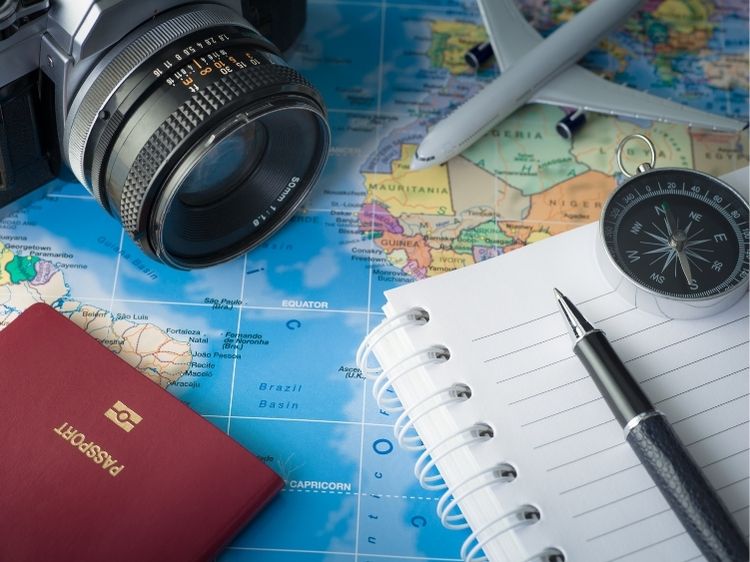Traveling abroad can be thrilling, but it also comes with its fair share of challenges. If you’re planning to visit a foreign country, one crucial tool to rely on is the U.S. Travel Advisory system. But hey, what exactly does it entail? How does it help travelers like you? Well, buckle up because we’re about to unravel all the nitty-gritty details you need to stay safe and informed while globe-trotting.
What Is the U.S. Travel Advisory?
The U.S. Travel Advisory is a system developed by the U.S. Department of State to inform citizens about safety risks when traveling to other countries. These advisories provide updates on potential threats, such as political instability, natural disasters, crime, and health risks.
Key Highlights:
- Purpose: To help U.S. citizens make informed travel decisions.
- Scope: Covers every corner of the globe.
- Updates: Regularly revised based on current conditions.
The Four Travel Advisory Levels Explained
The travel advisory system uses a four-tier scale to indicate the level of safety for each country. Here’s how it breaks down:
- Level 1: Exercise Normal Precautions
- Countries in this category are generally safe.
- Example: Many European countries fall under this level.
- Level 2: Exercise Increased Caution
- Some risks exist, such as petty crime or localized unrest.
- Example: Travelers to Mexico may be advised to avoid certain regions.
- Level 3: Reconsider Travel
- Significant risks like political instability or high crime rates.
- Example: Countries experiencing civil unrest often land here.
- Level 4: Do Not Travel
- Severe risks, such as war zones or areas with active conflicts.
- Example: Afghanistan is frequently under this category.
Why Are Travel Advisories So Important?
Let’s face it: no one wants their vacation to turn into a nightmare. The U.S. Travel Advisory system acts as your ultimate safety guide. Here’s why it matters:
- Safety First: Knowing the risks helps you avoid dangerous areas.
- Informed Planning: Choose accommodations and destinations wisely.
- Emergency Preparedness: Know where U.S. embassies or consulates are located.
Tips for Navigating Travel Advisories
Let’s cut to the chase. Here’s how you can make the most of the U.S. Travel Advisory system:
- Check Regular Updates
- Visit travel.state.gov regularly for real-time updates.
- Assess Your Risk Tolerance
- Decide what level of risk you’re willing to take based on the advisory level.
- Stay Connected
- Enroll in the Smart Traveler Enrollment Program (STEP) to receive updates and alerts.
- Research Thoroughly
- Dive into specifics like health risks, transportation safety, and cultural sensitivities.
- Plan Alternatives
- Always have a backup plan in case of sudden changes.
How to Use Travel Advisories for Trip Planning
Using the U.S. Travel Advisory isn’t just about avoiding danger; it’s about crafting a hassle-free experience. Here’s a simple checklist:
- Start With the Advisory Level
- Read the overall level assigned to your destination.
- Dig Deeper
- Look for details on specific risks like crime rates, terrorism, or health alerts.
- Contact Local Authorities
- Reach out to your destination’s tourism board for additional advice.
- Secure Necessary Documentation
- Check visa requirements, insurance coverage, and vaccination needs.
Common Misconceptions About Travel Advisories
Let’s address the elephant in the room: travel advisories aren’t always as restrictive as they seem. Here are some common myths debunked:
- “Level 2 means I shouldn’t go!”
Not true. It simply suggests being more cautious. - “Advisories never change.”
They’re updated frequently, often reflecting improving conditions. - “They’re overly cautious.”
While conservative, they’re designed to err on the side of caution for your safety.
FAQs
What is the safest way to check a U.S. Travel Advisory?
Head straight to travel.state.gov or download the State Department’s mobile app for quick updates.
Are travel advisories mandatory?
Nope! They’re guidelines, not restrictions. The final decision rests with you.
Do travel advisories affect travel insurance?
Absolutely. Some insurance providers may not cover trips to Level 3 or Level 4 destinations.
Can advisories change after I’ve already booked my trip?
Yes, so stay vigilant. Always monitor updates leading up to your departure date.
Summary
The U.S. Travel Advisory system is your ultimate guide to traveling smart and staying safe. By understanding advisory levels, dispelling myths, and following practical tips, you can make the most of your journey—whether it’s a business trip or a dream vacation. So, don’t leave your safety to chance. Use these resources to plan wisely, and you’re golden!
Authoritative Sources
- https://travel.state.gov
- https://www.cdc.gov/travel
- https://www.who.int/travel-advice

